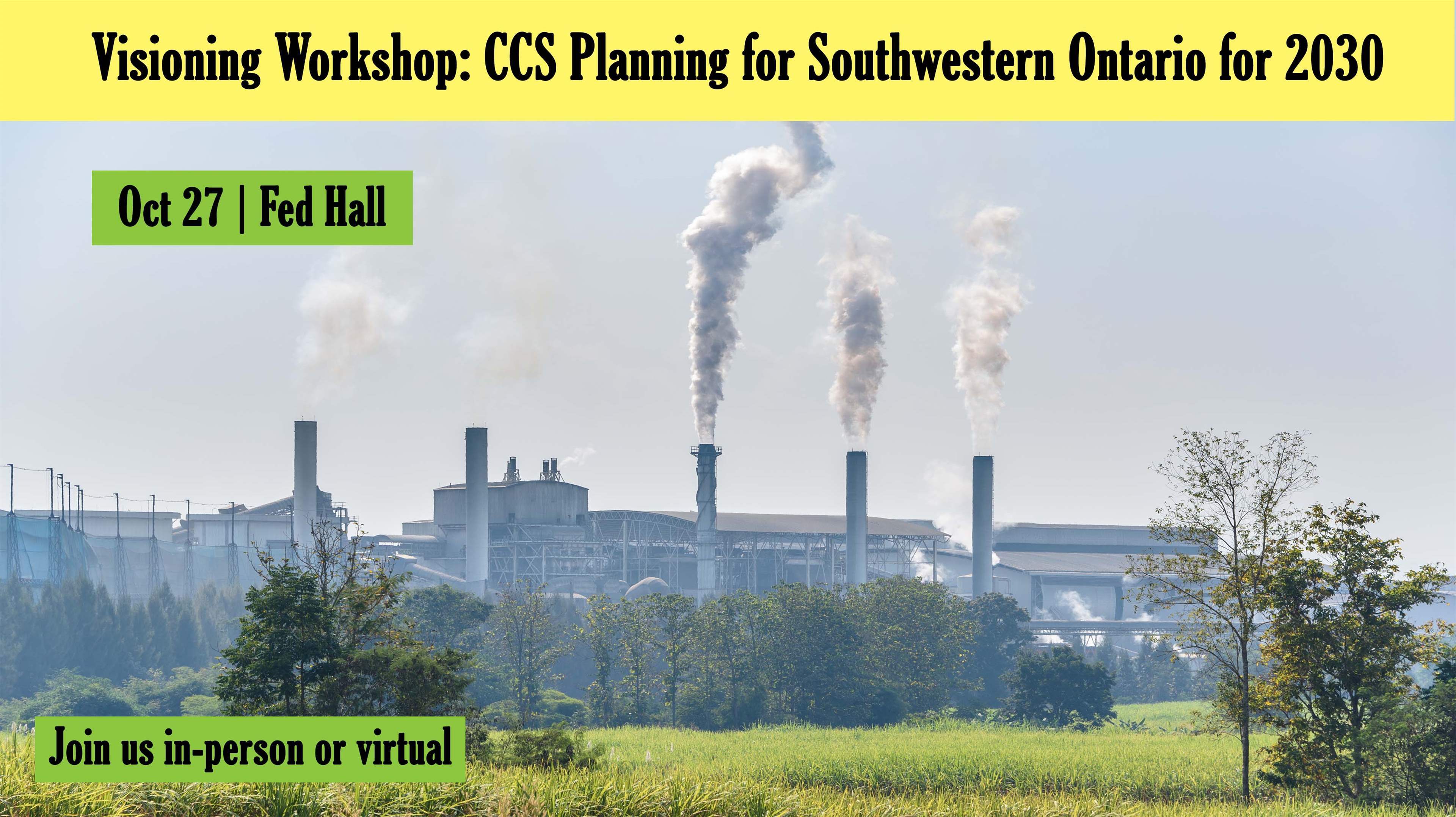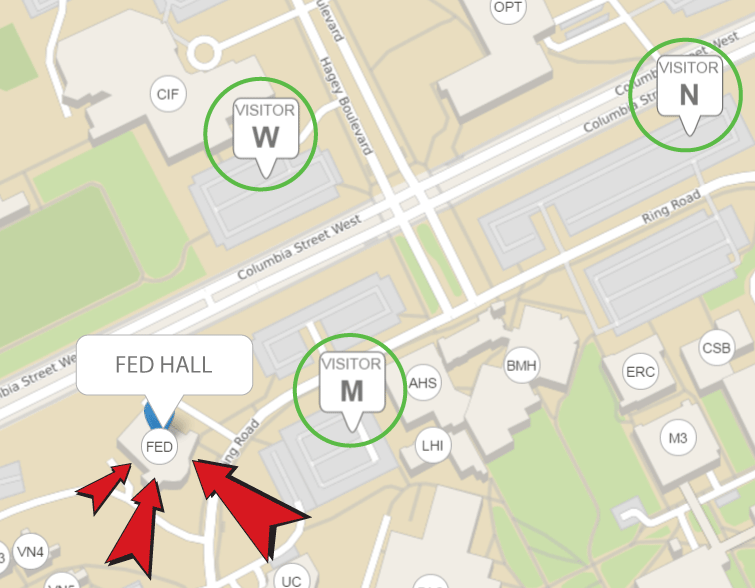
Helping Ontario’s Heavy Industry Transport and Store CO2 by 2030
Canada has committed to a massive GHG emissions reduction by 2030 (i.e., CO2 emissions abatement). Ontario heavy industry (steel, cement, chemicals, oil refining, automotive…) will be transitioning to low-CO2 technology over the next 20-30 years, but to meet emissions goals identified by the Federal Government for 2030, action must be taken now. As C-taxes increase to $170/tonne by 2030, and as the USA considers carbon border tariff adjustments, actions that can be economically achieved to reduce emissions will help Ontario’s heavy industry remain sustainable.
The figure shows the principal SW Ontario CO2 emitters for 2019, estimated by Environment Canada. These plants are the industrial backbone of Ontario without which its economy would be unsustainable. Carbon capture and storage (CCS) in the sedimentary rocks of southwest Ontario is an important option requiring immediate assessment before infrastructure on the ground can be located. With the exception of depleted oil and gas reservoirs, the most promising reservoirs for CO2 sequestration are poorly understood. These deep saline aquifers only now have intrinsic value because of the need for CCS.
The recent Global CCS Institute’s report for the Government of Alberta identified five “barriers” to CCS investment. Four of the five are policy responses, e.g., a bankable value of CO2 emissions and investment in transportation and storage networks. However, one is overwhelmingly a technical issue that has been the principal concern of the University of Waterloo and Geofirma Engineering of Ottawa during 2021, i.e., Supporting detailed appraisal of prospective storage resources and adoption of the most appropriate capture technologies.
In pursuit of this technical objective, the Waterloo Institute for Sustainable Energy – WISE – of the University of Waterloo – is hosting a Visioning Workshop on the issues related to the capture (i.e., processing), transportation, and subsurface storage of CO2 in southwestern Ontario on 27 October 2021, starting at 8:30 AM (Registration).

Agenda
| 8:30 am | Registration | ||
| 9:00am - 10:00am | Welcome Note: Claudio Cañizares, Executive Director, Waterloo Institute for Sustainable Energy (WISE) & Hydro One Endowed Chair in the Department of Electrical & Computer Engineering (9:05am - 9:20am) Keynote: Drew Leyburne, Assistant Deputy Minister of the Energy Technology Sector, Natural Resources Canada, Ottawa CO2 Perspectives on Industrial Carbon Capture & Sequestration by 2030
|
||
| 10:00am - 10:15am | Coffee Break | ||
| 10:15 am - 12:00pm | Transportation and CO2 Processing for Sequestration
The CO2 Sequestration Potential of SW Ontario
|
||
| 12:00pm - 1:00pm | Lunch break | ||
| 1:00pm - 2:00pm | Focus Sessions [60 minutes Q&A involving all registered participants, and which will NOT be recorded to ensure frank discussions.] | ||
| Carbon sequestration (30 min) Moderator: Maurice Dusseault |
Carbon Transport (15 min) Moderator: Roydon Fraser |
Carbon Capture (15 min) Moderator: Eric Croiset |
|
| Plenary Summary Session | |||
| 2:00pm - 2:15pm | Coffee break | ||
| 2:15pm - 3:00pm | Path Forward to 2030 (2:15pm - 2:30pm) Robert Walsh, Geofirma Engineering, Process for assessing sequestration reservoirs (2:30pm - 2:45pm) Robin Hughes, CANMET, Prospects for an Ontario Carbon Grid and CCS Hubs for 2030 (2:45pm - 3:00pm) Claudio Cañizares, WISE, Path Forward - Getting to investment decisions Workshop Ends |
||
Themes
Panel 1
CO2 Perspectives on Industrial Carbon Capture & Sequestration by 2030
Panel 2
Transportation and CO2 Processing for Sequestration
Panel 3
The CO2 Sequestration Potential of SW Ontario
BRIEFING DOCUMENT
A comprehensive overview and a detailed background regarding this workshop can be found here.
Sessions
BREAK OUT ROOMS SESSIONS
45 minutes discussion, followed by 15 mins plenary during which each moderator summarizes the issues arising; participants are free to choose which discussion session to join.
- Carbon capture (moderator: Eric Croiset)
All the industries shown in the Figure on page 1 produce CO2 emissions in their flue gases. CO2 capture from flue gas streams is most frequently achieved by the use of amine-based solvents; amine absorption has been used at both Quest in Alberta and Boundary Dam in Saskatchewan. Other capture technologies may be used including oxy-fuel combustion or other post-combustion processes, many of which have been extensively investigated and tested with initial commercialization underway. In this breakout session, we will focus on the selection issues associated with the various capture technologies.
- Carbon transport (moderator: Roydon Fraser)
Figure 1 illustrates the fact that emitters are widely scattered across SW Ontario CO2 transmission will necessarily have to consider the use of existing pipelines and rights-of-way to facilitate transmission or rail and highway shipments. This breakout session will consider whether coastal tankers might gather and ship CO2 from elsewhere in Ontario through the Great Lakes to CCS hubs, which might access the deeper parts of the sedimentary basin beneath SW Ontario.
- Carbon sequestration (moderator: Maurice Dusseault)
Our biggest challenge is to match sequestration sites to CO2 sources. The sedimentary rocks beneath SW Ontario have been used and abused for 150 years for oil and gas production and there are about 30,000 wells penetrating to various depths; fortunately, the vast majority are quite shallow and not to the depth of CO2 sequestration (>800 m). The pore volume in these rocks is valuable, not for mineral resources, but for the pore volume itself in that it may allow us to store vast amounts of CO2 at high pressure – if and only if we seal the wells that penetrate to the sequestration depth. While the few depleted oil and gas fields that are suitable for CO2 sequestration are relatively well understood by Ontario’s petroleum industry, the “Oil Patch”, the much larger saline aquifers are poorly characterized but likely offer long-term storage exceeding many years of CO2 production. However, because the brine saturating them is worthless, these have not been studied. So, we now have to understand what might be possible using an ill-defined but local resource and to do it in less than 9 years. This breakout session will focus on the path forward.
- Plenary Summary Session
The moderators will sum up the general themes of their sessions without attribution of names and/or institutions if requested.
Parking Venue
CCS Workshop will be held in Federation Hall at the University of Waterloo. We suggest that participants coming from off-campus enter from Columbia Street West. Should you have any questions regarding parking at any time during your stay please feel free to ask the enforcement officers (identified by bright green shirts with Parking Services decals), staff at the parking kiosks, or stop by the Parking Office located in Commissary 154. Any of the staff would be happy to assist.

Visitor parking is available in Lots N, and W as shown above at a cost of $5.00 per day. Parking in M lot is available at the cost of $6.00 per day. Machines will only take master card or visa. They will not accept Amex, Tim Hortons Visa, or Visa Debit. There are signs on the machine at both the entrance and exit to indicate same. There are help buttons on all machines which will ring into the Parking office.
Contact Parking Services at 519-888-4567 x33100